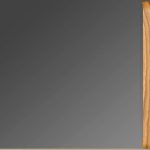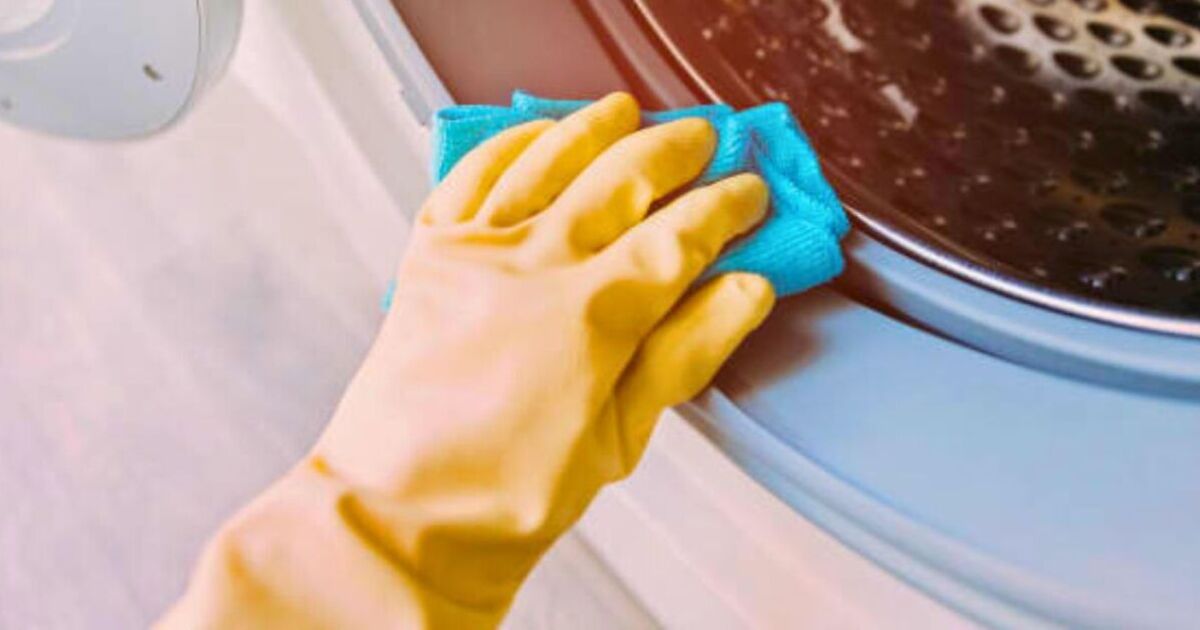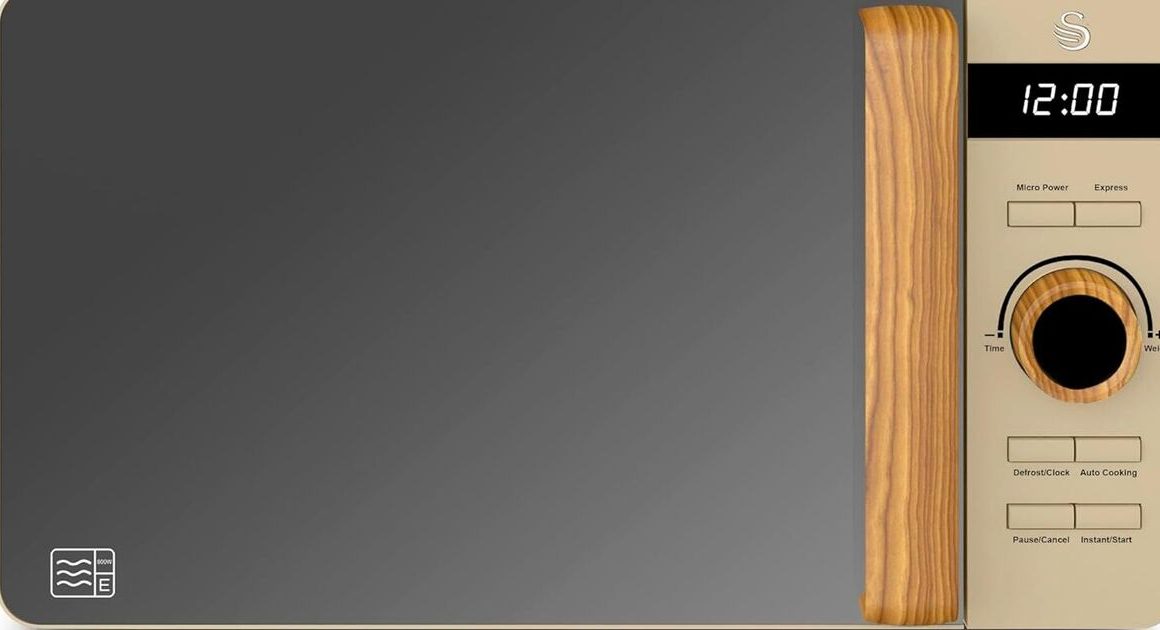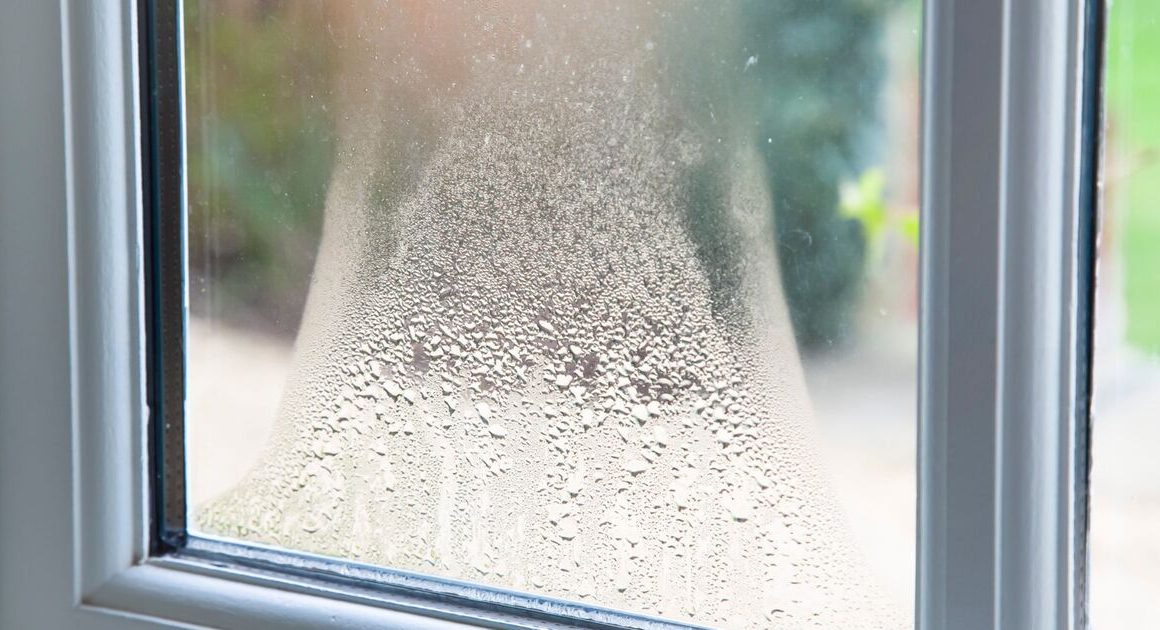Many people can overlook cleaning their washing machine, but if this appliance smells a little funky it may be time to check the inner rubber seal around the door.
Washing machine doors need to be cleaned regularly as moisture builds up on the rubber seal after a wash cycle which will attract mould, limescale and other dirty residues.
If left uncleaned the washing machine door seal will begin to smell musty and cause your laundry to be stained even if you have just removed it from the wash.
Konstantina Antoniadou, an expert from Indie Get Up, has shared it is quick and easy to get rid of mould in the washing machine naturally but highly recommends against using white vinegar.
She said: “The acidity of vinegar can pose a risk to certain components of your washing machine, such as rubber seals and hoses. Prolonged exposure to it may cause deterioration or premature wear and tear.
“Also, while vinegar can eliminate some odours, it has a strong smell of its own. If not rinsed thoroughly, the scent of vinegar can linger in your washing machine and even transfer to your clothes. Not exactly the fresh scent you’re aiming for!”
It is also recommended not to use bleach to kill mould. Not only can the harsh chemicals irritate your clothes but it can greatly damage rubber and make it more likely to cause your washing machine to leak.
Instead, the “best natural way” to clean a washing machine is to use baking soda and citric acid, a natural mild acid found in lemon juice but a crystalised version of it is also sold in supermarkets as a cleaning agent.
Konstantina explained: “Baking soda is a fantastic cleaning solution! This gentle yet powerful ingredient is a staple in natural cleaning. It helps break down grime, neutralize odours, and acts as a mild abrasive.”
She added: “Citric acid is a natural compound found in citrus fruits and is widely used as a cleaning agent. It effectively removes limescale and mineral deposits that can build up in your washing machine.”
Citric acid will create an acidic environment that will prevent mould and mildew from being able to grow back without being harsh enough to damage the seal around your washing machine.
Baking soda is alkaline which means it can break down grease and oily build-up that may be in your rubber seal effortlessly so you can deeply clean the washing machine in no time.
How to use citric acid and baking soda to clean the washing machine seal
You will need:
- Two tablespoons of citric acid
- 115g of baking soda
- Warm water
- A clean cloth or sponge
Method:
Simply add a few tablespoons of citric acid to the detergent drawer or to the drum of your washing machine.
Then add baking powder directly to the drum of the washing machine and choose the hottest and longest wash cycle available.
Konstantina said: “The combination of hot water and a lengthy cycle allows the baking soda to work its magic in cleaning your machine thoroughly.”
Once the wash cycle is complete, open the washing door and use a clean cloth or sponge and warm water to wipe down the washing machine seal around the door.
Your washing machine door should be completely clean, but make sure to always leave the washing machine door open in the future after a wash to prevent mould.
Konstantina said: “After completing the cleaning process, leave the lid or door of your washing machine open for a while to allow the interior to air dry. This will help prevent any moisture buildup and keep your machine fresh.”










